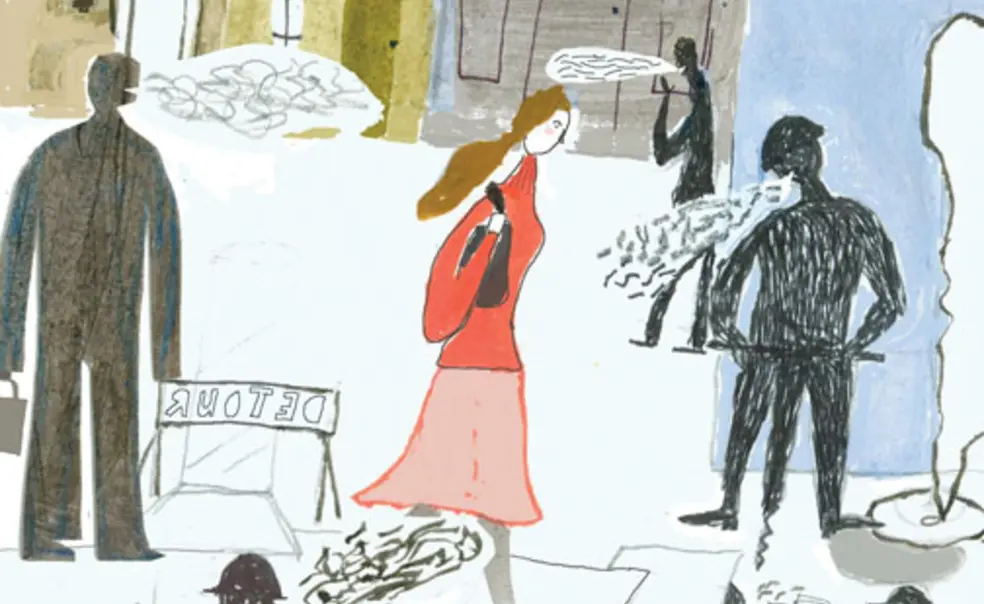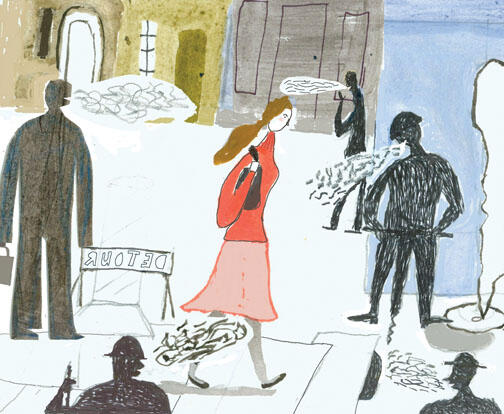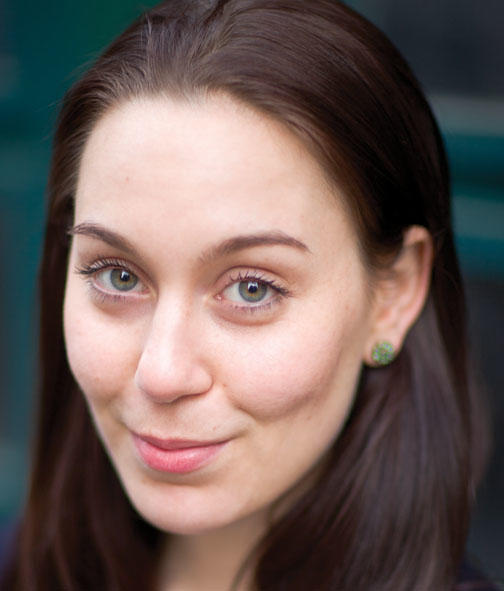Glimpses of life in a different city
The first time someone catcalled me, I was 12 years old. I was walking down the street in the suburb where I grew up in Sydney, Australia, wearing a new outfit I’d been given for my birthday a few days before. A car full of teenage boys drove by and shouted something — I don’t remember what — out the window.
I’m 25 now, and in the intervening years, I’ve been to places where the catcalling was worse — more frequent in Paris, and more threatening in Bali — and places where it rarely happened, like Princeton. But for 13 years, catcalling has been a fact of life, just as it is for so many other women.
After graduating from Princeton, I moved to New York City, and the catcalling — or street harassment, as some people call it — would start the moment I stepped out my front door. The first call would come as I stood on my stoop turning the key in the lock; the next, as I walked down 150th Street to the subway. A few words and a leer on the D train. Whistles on Lexington Avenue or honks on Lafayette Street. A break while I was at the office — which was rudely interrupted when I left the building to grab lunch. There were more catcalls on the way home, and still others later in the evening as I walked back from the yoga studio, sweaty and exhausted, in the dark.
My shock transformed into anger. Far from feeling flattered, I felt threatened, in part because I soon realized that the “hey baby”s and “you’re so beautiful”s had little to do with attraction. The catcalls came no matter what I was wearing, and it wasn’t because I’m gorgeous no matter what I wear. It was because I was a woman alone on the street. These men didn’t want me; they wanted to assert their presence, their dominance. I wasn’t going to dignify that with a positive response, a smile, or a hello. But if I ignored them, if I kept my head down and kept walking, their come-ons often turned to hateful, profanity-laden insults. The shouted compliments, the low hissed “so gorgeous”es, always carried the implicit threat of violence. If “hey sexy” so easily could become “screw you,” it would be easy for words to become blows.
Didn’t I have the right to stand on my own stoop without fear of sexual harassment? Didn’t I have the right to walk home from yoga class without running the risk of sexual violence? Didn’t I have the right to go buy a sandwich without being reminded that, because I’m a woman, I’m not safe or equal in public space? I spent the first few months of my new life in New York seething.
It didn’t take long for my anger to transform into a desire for a solution to this problem.
As it turned out, I wasn’t the only one searching for a response. A few years before I had arrived in New York, a group of young activists had gotten together to start a movement to end street harassment. They encouraged people who had been harassed to use their cell phones to take photos of their harassers, and then post them on a website. If you’re going to make public spaces threatening and unsafe, they reasoned, you deserve to be publicly shamed for it.
Less than a decade later, the organization, HollaBack, has chapters in 62 cities and 25 countries, a global movement to end street harassment. The idea is to call attention to how widespread this problem is, and to make those who experience it feel less alone. People are using technology — cellphone cameras, smartphone apps, mapping software — to solve a social problem.
If you’re a woman, you’re probably nodding your head in understanding as you read this. If you’re a man, you’re probably wearing a confused frown. In those first months in New York, I would come home at the end of the day wanting to vent about street harassment. It soon became very clear that while the women in my life knew exactly what I was talking about, the men in my life had no idea.
They had heard that street harassment existed, they knew that it sometimes made women uncomfortable, but they never had seen it happen. They had a Heisenberg problem: It rarely happened when they were present, because they were present.
Then, one night when I was walking home from yoga, I called my boyfriend. I never had been harassed while walking with him, but as I walked along the street and we tried to have a conversation, he heard the catcalling in the background. He heard the things that were shouted at me in the seven-block walk home. After that, he told me, he started seeing and hearing street harassment everywhere. It had been happening right in front of him all along, but it was as though that phone call had given him an extra set of eyes and ears.
It’s not just New York. It’s Istanbul and San Diego and Venice and Nairobi and São Paolo and, of course, Sydney. And it’s not only women and girls who are harassed on the street; harassment is a miserable fact of life for gay, bisexual, and gender-nonconforming people, too. And, to be fair, not everyone finds it threatening — some women find it flattering. But most don’t.
As the male co-founders of HollaBack realized, women live in a different city. Once a man has glimpsed that city, he can start to change it. My father, who lives in Sydney, did just that. One day, he saw a crew of construction workers harassing women on the street; he pulled out his smartphone to film them doing it. Seeing that, the men stopped. It’s not always that simple, and the grim reality is that stepping in to stop street harassment can be dangerous for men. But my dad had been granted a temporary visa to the city that women live in, and he used it to make that city a safer, more welcoming place.
Chloe S. Angyal ’09 is an Australian writer and commentator who lives in New York City. Read more of her work at chloesangyal.com.














No responses yet